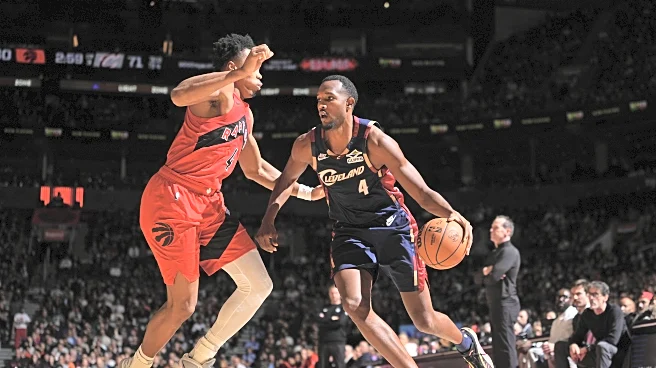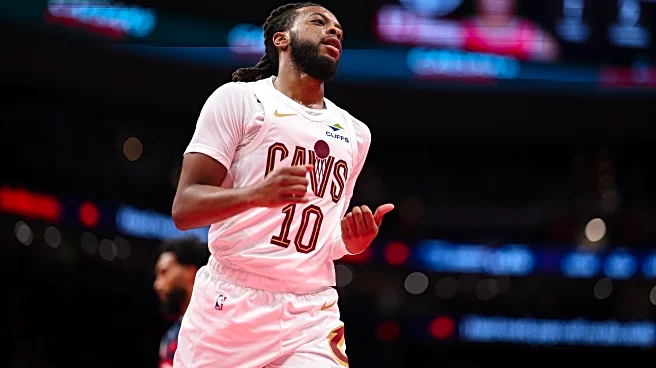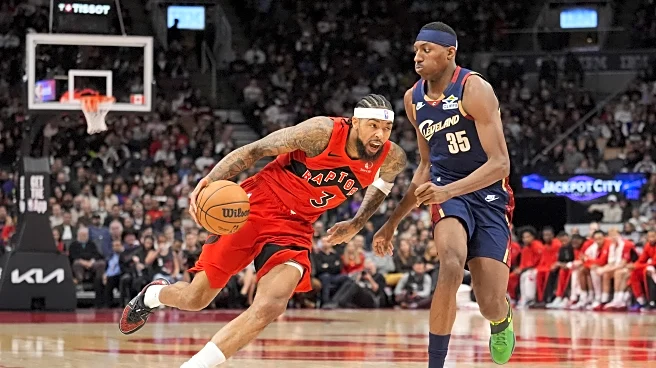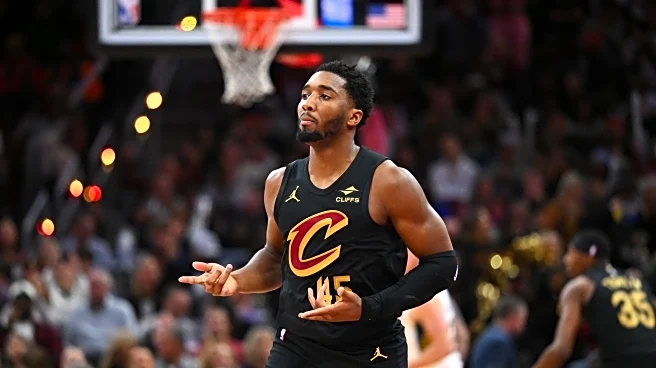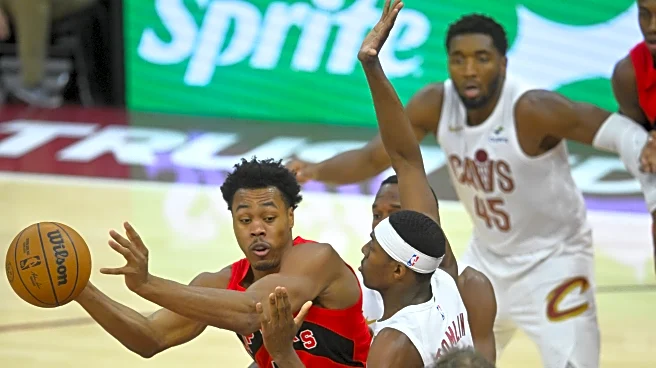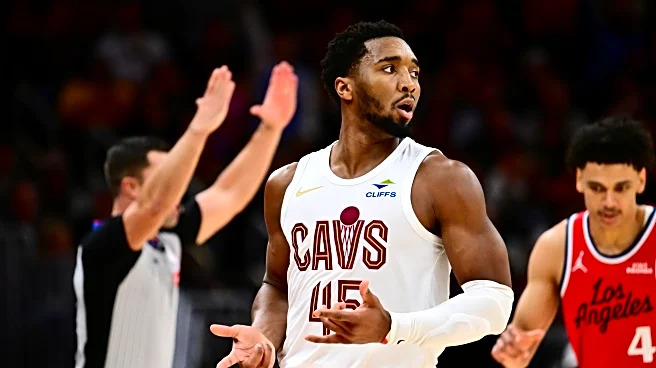The Cleveland Cavaliers weren’t able to complete a fourth quarter comeback, losing 110-99 to the Toronto Raptors. Let’s see who won and lost the night.
LOSER – Evan Mobley
This game was begging for Mobley to take over. Everything built to a humongous fourth quarter from last year’s Defensive Player of the Year. He had been the only Cavalier who was consistently scoring. He had the matchup advantage versus a Raptors team with various wings whom Mobley could target. And yet, he went invisible in the final quarter.
Mobley
attempted 7 shots in this game. That’s fewer than Tyrese Proctor, Nae’Qwan Tomlin and Jaylon Tyson. It’s only one field goal more than Luke Travers attempted. That’s unacceptable. Worse, is only taking 1 field goal in the fourth quarter. Even Chris Livingston, who made his Cavalier debut, took more shots than Mobley in the final 12 minutes.
There’s no sugar coating this. The Cavs have spent years telling us that Mobley will no longer be frozen out of games in the closing quarter. The fact that this continues to happen is an indictment of Mobley, his teammates, and the coaching staff.
Are we overreacting to a game on the second night of a back-to-back? Probably. But there has been a consistent theme of this happening. If the Cavs want to reach their ultimate goal, Mobley has to be daring enough to take them there or fail trying. Not even making an attempt to carry the team is inexcusable.
LOSER – Cavs Three-Point Shooting
Stop me if you’ve read this already.
The Cavs haven’t shot the ball anywhere near as well as they did last season. They’ve struggled to find their range as injuries hold back their most consistent shooters. Tonight was the epitome of this, with Garland, Strus, Hunter and Merrill on the sidelines.
That’s not an excuse. The Cavaliers who did play tonight simply weren’t able to hit their shots. Cleveland shot 14-48 (29%) from deep and couldn’t counter by getting into the paint.
WINNER – Donovan Mitchell’s First Half Playmaking
Cleveland came into this game with a massive injury list. This naturally put the onus on Donovan Mitchell to carry the offense. But rather than going gung-ho and trying to win this game one-man-army style, Mitchell wielded his shot creation to get his teammates involved.
Mitchell drew multiple Toronto defenders and made the correct passes to counter. He read the floor well, and his teammates rewarded him by making shots. Mitchell dished out 6 assists in the first half.
This approach not only allows Mitchell to protect his health through a long season, but I’d argue it’s also the superior way for Mitchell to play within the grand scheme of things. The Cavs’ offense flows better when Mitchell makes a conscious effort to distribute the ball. And, if his teammates hit their shots, it opens the floor for Mitchell to establish himself as a scorer.
Unfortunately, the Raptors eventually got the best out of Mitchell. Their efforts to trap him at halfcourt and force the ball out of his hands paid off. Mitchell’s teammates went cold, and he wasn’t able to break free for as many easy opportunities. But the first half was a plus.
LOSER – Donovan Mitchell’s Second Half
Now, let’s go a little deeper into what went wrong in the second half.
Mitchell was making the right plays in the first. Expertly dishing the ball when Toronto showed him two defenders. This began to fade as the game went on, and Mitchell was no longer able to resist the urge to lead his team to victory through his scoring.
It nearly worked out. Mitchell unleashed consecutive three-pointers in the fourth quarter, making it seem like he was going to once again lead Cleveland to a comeback. But it quickly became clear that Mitchell just didn’t have it tonight. That’s where we’d like to see him revert to being a playmaker, rather than pressing the issue.
Mitchell finished the game with 17 points on 3-12 three-point shooting.
WINNER (in progress?) – Jaylon Tyson on the Short Roll
The Cavs have used Tyson as a screener throughout the early portion of this season. He’s a good fit for this role as a stocky wing who isn’t afraid to get physical. The issue, so far, has been making himself a threat to score off the screen.
Tyson isn’t an elite, volume shooter or an overly explosive athlete. That means he isn’t as much of a threat to screen and then pop for a three-pointer or fly to the rim for a dunk. Instead, he’ll have to make a home for himself in the short roll, catching the ball around the free throw line and creating from there. His options in the short-roll include shooting a floater, dumping it to a big man, or spraying out to shooters on the three-point line.
The results against Toronto weren’t great, with a handful of turnovers and missed shot attempts. But the process is something I’d like to see continue, when possible. This will be a winning formula for Tyson if he’s able to develop this area of his game.
Outside of the roll, Tyson was effective shooting the ball. He buried 2-3 three-point attempts.
WINNER – Nae’Qwan Tomlin’s Jumper
Before Sunday’s game against the LA Clippers, Tomlin had been shooting 0-14 from downtown. This was surprising for a player who had shown decent range in the G-League and with Cleveland in Summer League. Tomlin finally found his touch at the NBA level, nailing his first three-pointer on Sunday — and then following it up with a pair of triples in Toronto.
I wouldn’t expect Tomlin to turn into Kevin Durant anytime soon. But sometimes, seeing the ball go through is all you need to regain confidence. Tomlin looked much more effective as a scorer tonight, flashing a hint of three-level shot making for the first time in his NBA career.





